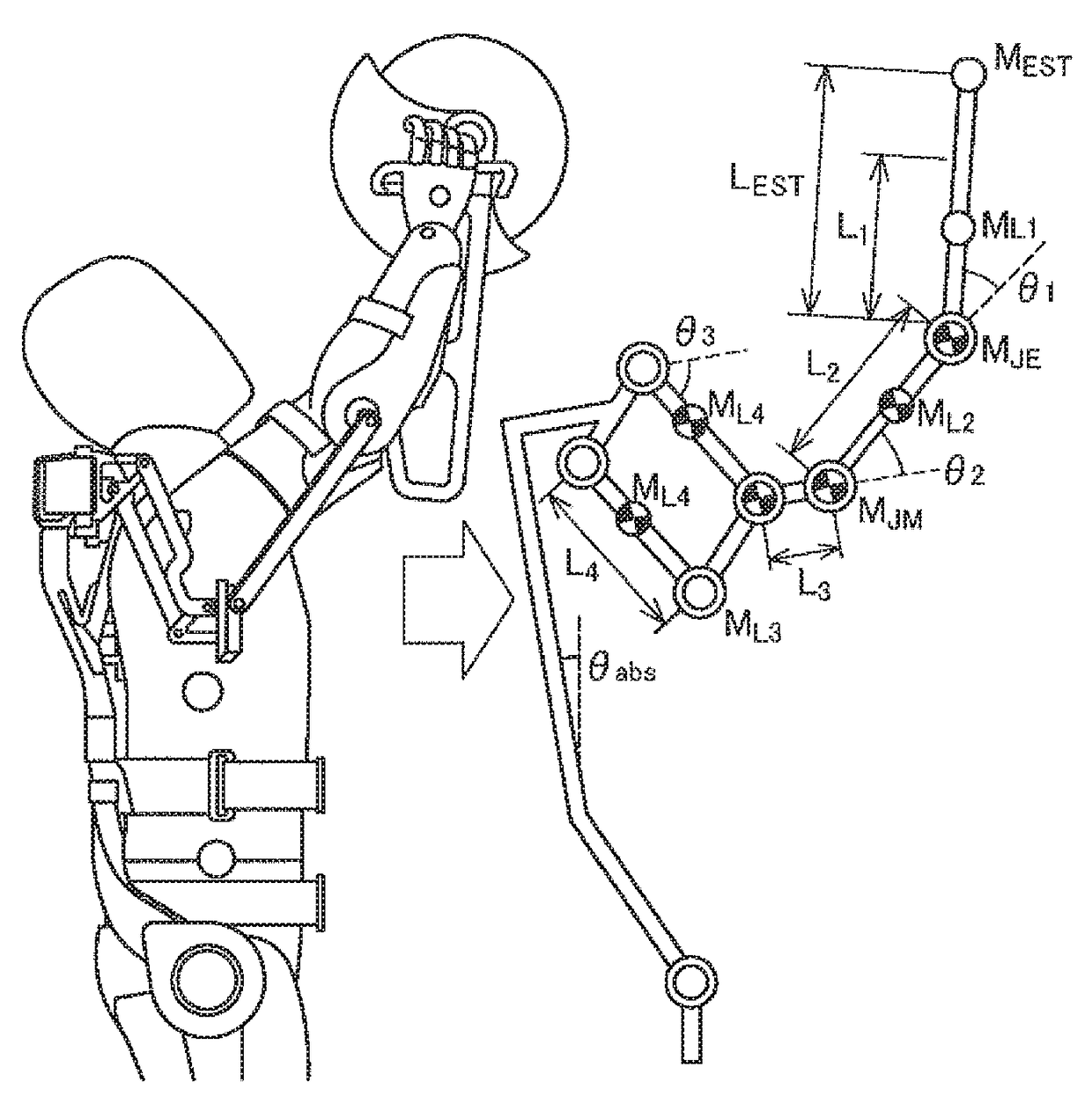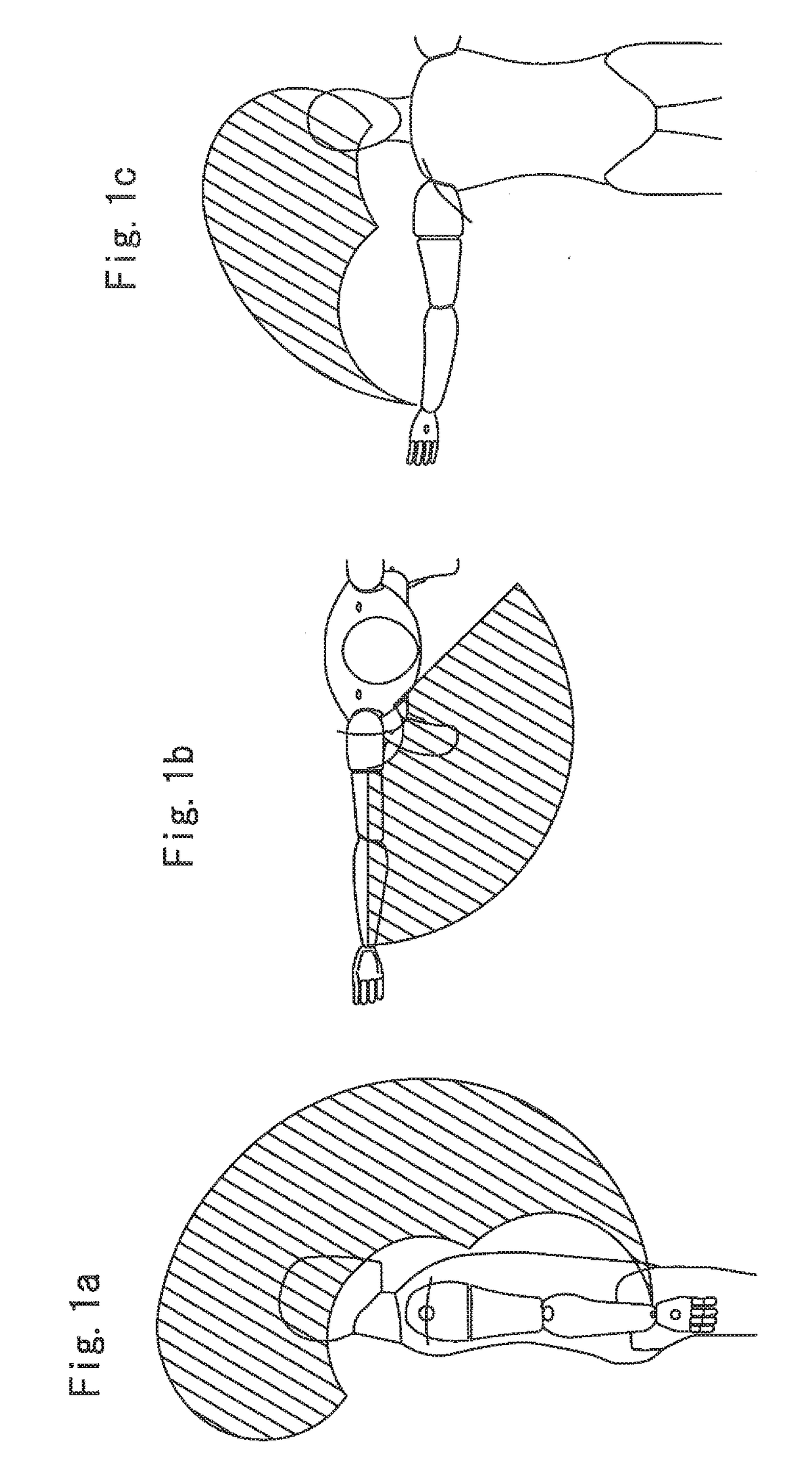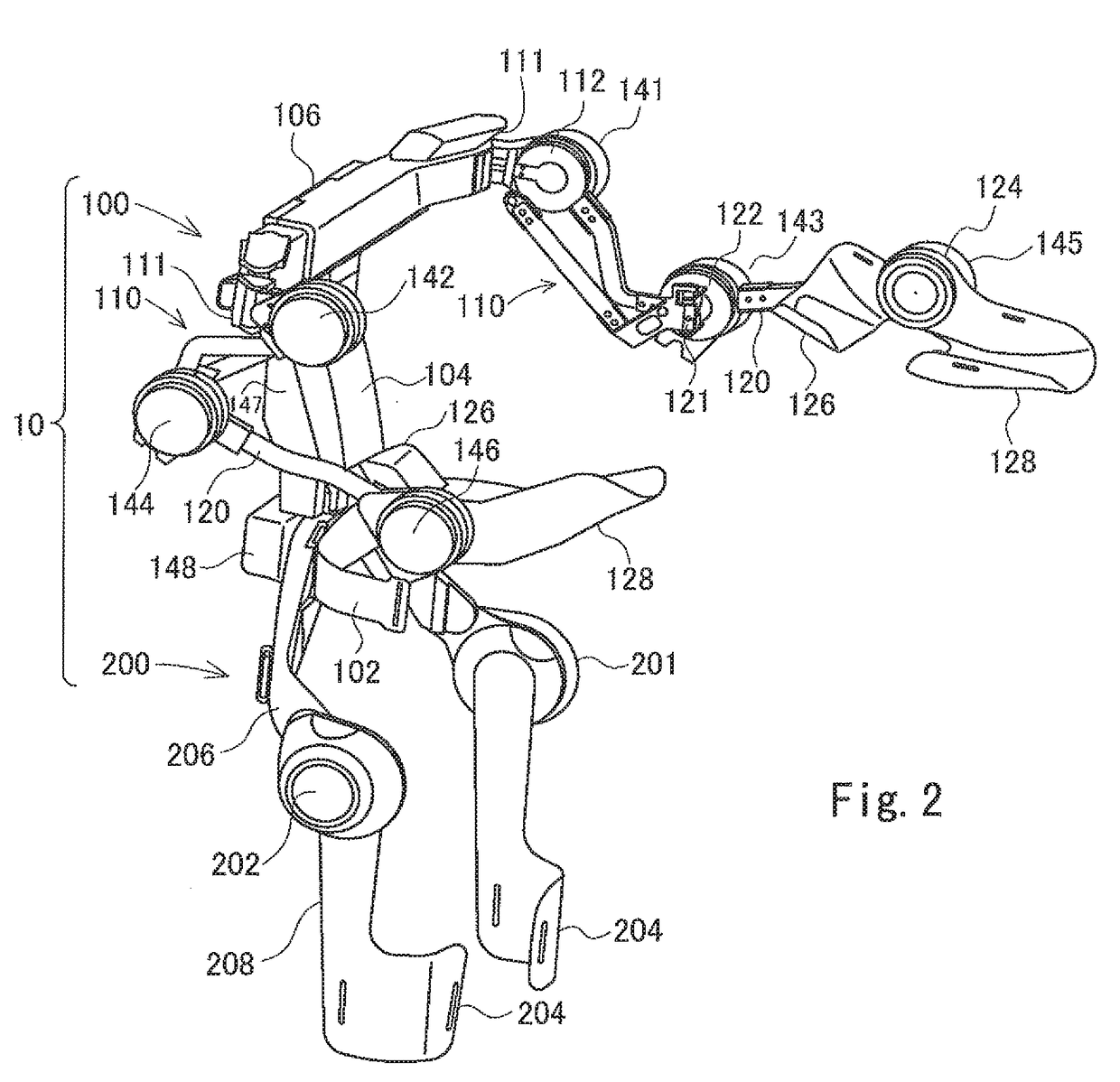Wearing-type movement assistance device
a technology of movement assistance and wearables, which is applied in the field of wearable-type movement assistance devices, can solve the problems of insufficient degree, type differences, and inability to cope with the movement of upper limbs and trunks necessary for work in some cases, so as to reduce the load to the waist, improve the working efficiency, and ensure the degree of freedom of the upper body
- Summary
- Abstract
- Description
- Claims
- Application Information
AI Technical Summary
Benefits of technology
Problems solved by technology
Method used
Image
Examples
Embodiment Construction
[0032]Hereinafter, an embodiment of the present invention will be described based on the drawings.
[0033]In work with a lifted posture of the upper limbs maintained, a tool is grasped in front of the body and is used by lifting the tool above. Therefore, in the wearing-type movement assistance device according to the present embodiment, the movable range of a hand is set in front of and above a wearer. Also, regarding the movable range of the trunk, the degree of freedom of the lumbar spine included in the spinal column is assumed to be restricted. This is because the waist assistance device fixes the lumbar spine and provides movement assistance while reducing the load to the endoskeleton system.
[0034]The following Table 1 shows presumed movable ranges of joints of a human body.
TABLE 1PresumedMovable RangePartMovement[deg]TrunkRotation33Lateral Bending25Forward Bending23Rearward Bending12ElbowBending140Extension0Pronation90Supination90ShoulderBending163Extension5Horizontal Bending14...
PUM
 Login to View More
Login to View More Abstract
Description
Claims
Application Information
 Login to View More
Login to View More - R&D
- Intellectual Property
- Life Sciences
- Materials
- Tech Scout
- Unparalleled Data Quality
- Higher Quality Content
- 60% Fewer Hallucinations
Browse by: Latest US Patents, China's latest patents, Technical Efficacy Thesaurus, Application Domain, Technology Topic, Popular Technical Reports.
© 2025 PatSnap. All rights reserved.Legal|Privacy policy|Modern Slavery Act Transparency Statement|Sitemap|About US| Contact US: help@patsnap.com



